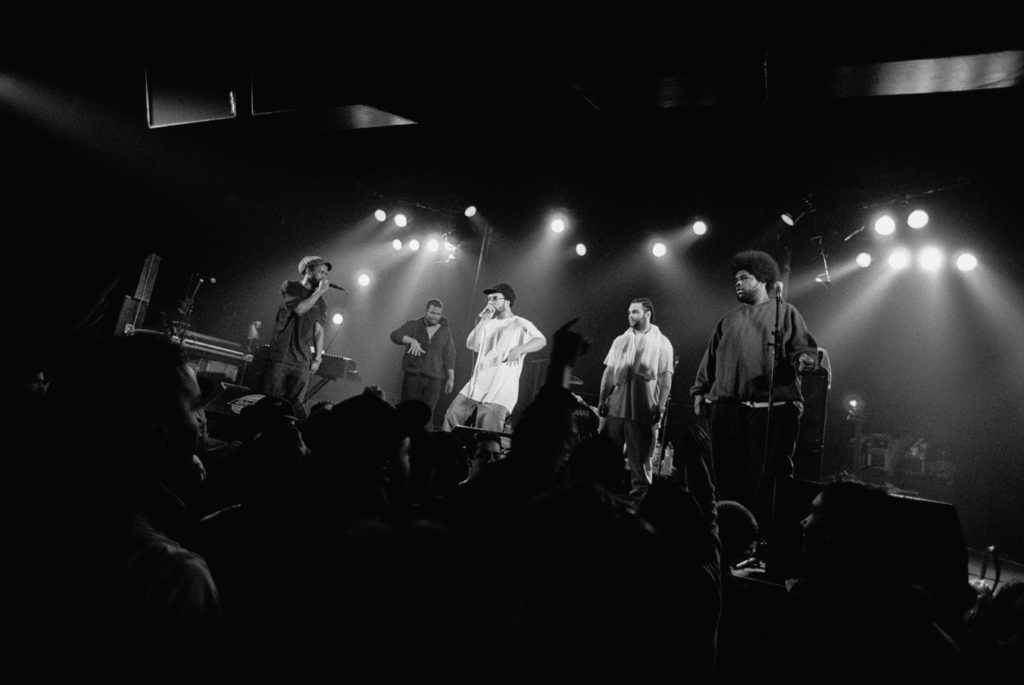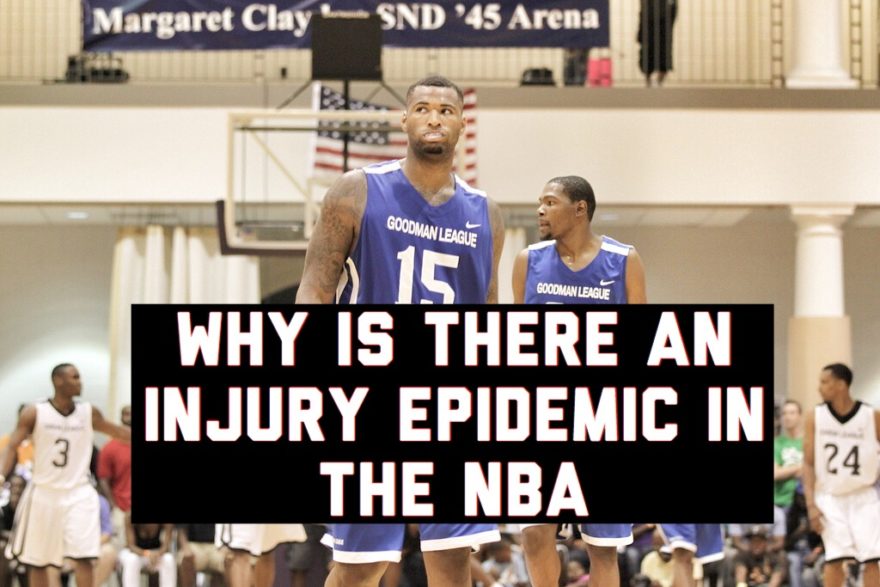Even though I am no longer in the league, I still follow what’s going on in the NBA to a degree.
And this weekend was a weekend loaded with season-ending injuries.
First, you have Demarcus Cousins go down with an achilles rupture, then you have Andre Roberson go down with a patellar tendon tear, and then my boi Mike Conley is out for the season with heel surgery.
The NBA is a tough league.
Since the Cousins injury occurred first, I wanted to give you my initial thoughts as to when it happened.
Having witnessed an achilles tear occur this with a player I worked with, it’s something you never wish upon anyone.
For those who don’t know, Demarcus is the stud center for the New Orleans Pelicans. He has a very cool style of play where he can battle in the post, drive with mad handles, hit the three ball, pass, and is a rebounding monster. He has also been having one of his best years yet.
What he’s not known for is being this ripped physical specimen, a level headed player, or one who is in the best shape. When he came into the league, he was hovering at about 16.3% bodyfat, which for some odd reason is a stat many teams obsess over1.
Let’s now take a look at his injury mechanism.
My first thought was “what?!?!?!?!” He didn’t even do anything. Nothing worse than seeing a noncontact injury, because my PT brain immediately thinks “preventable preventable preventable!!!!!”
Then my mind went exactly to those things he is not known for: “Well, he’s not in the best shape. Probably doesn’t eat that well (which is true of a large portion of NBA players) so likely had poor tendon health to begin with, not the best mover, poor deadlift form, yada yada yada.”
Then I stopped myself.
Despite understanding the complex dynamics or pro sports and injuries, despite spending time living within this world, I still fell victim to bias. Biases that we exhibit whenever injury rears its ugly face.
We see these biases all the time. The reason why Derrick Rose can’t get over his injuries is because he has some psychological issues. Usain Bolt strained his hamstring because he can’t get out of an asymmetrical pattern. Mike Conley can’t get back has to be because I can do better than his rehab staff (which is false because they have excellent people there), I would never do intervention x because it might take away what makes this athlete great.
Well intentioned? Definitely. An exercise in humility? Likely not. Accurate? Hell to the no.

There’s a dirty little secret when it comes to pain, injuries, illness, disease, and the like:
We don’t know why.
We can say that asymmetry is a risk factor, a high acute:chronic workload is a risk factor, poor sleep is a risk factor, and these are all things I find important to intervene upon. We even try to blame the staffs that work with these people, and while I can’t attest to the Pelicans’ staff, both the Thunder and the Grizzlies have brilliant minds working for them.
[yikes-mailchimp form=”1″ submit=”Click here if you want a free acute:chronic calculator”]
But the problem is that we are dealing with complex individuals existing in chaotic and unpredictable environments.
When complex beings act in chaotic environments, prediction becomes near futile. Especially when you have these incredible physical specimens playing an unpredictable game against one another.
When we look at a guy like Demarcus Cousins, Andre Roberson, and Mike Conley, think about all the possible variables that may have influenced an injury occuring:
- Genetics
- Epigenetics
- Fatigue (both in-game and cumulative from multiple NBA seasons)
- Sleep quantity
- Sleep quality
- Circadian imbalance (an NBA given)
- Diet (which it turns out my assumption was wrong)
- tendon health
- previous injuries
- Movement variability
- age
- sex
- steroid use2
- antibiotic use2
- body mass2
- The play itself
- the plays leading up to the play itself
- The game’s pace (which is incredibly faster than prior years)
- Recent illness
- Stress levels
- Cholesterol levels3
- Other biomarkers
- Internal acute:chronic workload
- External acute:chronic workload
- Special physical preparedness
- General physical preparedness
- Supersystem health
- Social history and problems
- socioeconomic status
- Pressures from the front office and sports agent
- Other factors that I can’t think of off the top of my head
Though often we may make a favorable change by intervening within our scope, many times our biases may miss important contributing factors to a person’s complaint. Factors that if intervened upon could become a difference maker.
Or could not be.
I am hesitant to say root cause, because complex systems have no root cause. What we instead have is an interaction among several variables that lead to specific outputs occurring, injury being one of many.

It is this complexity that makes injury prediction and prevention unlikely.
When looking at complex systems in chaotic environments, we must become humble in our approach. We must become comfortable with uncertainty. Because we really do not know what impact our given interventions may have. We can be life changing for some, play a small role for others, and be inert for many.
I remember when I was in Memphis, we had an athlete who to say the least was tough to work with. He could love you one day and want to drop kick you the next. A lot of the fellas didn’t want to spend much time around this cat because of his injury history, personality, and many other reasons.
So guess who was put to the task?
We had our ups and downs. Our highs and lows, our periods of health and injuries, and all else that encompasses the rollercoaster of pro sports.
A coworker and I would wax philosophical on the extent to which we actually mattered to these guys. In the league, you are dealing with genetic freaks who didn’t get to the highest level because of a great PT or a killer strength and conditioning program, but because of their incredible skillset.
What impact will a movement program really make?
I argued that we had to play a role in injury prevention or something along those lines, we had to make some of a difference.
But I can tell you that a lot of the guys I who worked hard in the gym got hurt, and a lot of guys who avoided the gym and ate like garbage stayed healthy.
Dealing with these complex factors made me question if we as coaches and clinicians really do play a role in the lives of these athletes. With so many other stakeholders, factors, and luck involved in ultimate player and team success, do we really matter?
Then it was the day before I left for the D-League.
I was speaking with this athlete, and we had our last training session together. About to give our post-training session handshake, I received one of the most heartfelt thank you’s that I have ever been given in my life. Not something you would hear from this guy.
I fought tears the entire time.
Out of all the skills that I possess, out of all the hours of continuing education I’ve been to, out of all the weekends I studied my craft, and out of all the hours I’ve spent working with people, the impact that my craft had on this athlete was minimal.
The largest effect that I had on this guy was letting him know that I cared.
We have to be comfortable that giving a shit for the people we work with may be the greatest way to impact that person.
And in a realm of uncertainty such as sport, it’s the one thing we must strive to make certain.
Table of Contents
References
- Analyzing the NBA Draft Combine Measurements
- Mayo Clinic Achilles Tendon Rupture
- Cholesterol Levels and Tendon Pain May be Related
Photo and Video Credits

Outstanding ! I would also add massive intensity and very sports specific training starting at a young age and less free play as a child.
No question about that, Jim. It’s just a different time that we live in unfortunately.
Keep fighting the good fight!
Well said… and a much needed reminder.
Glad you liked it, B_Lee. Fam recognize fam!!